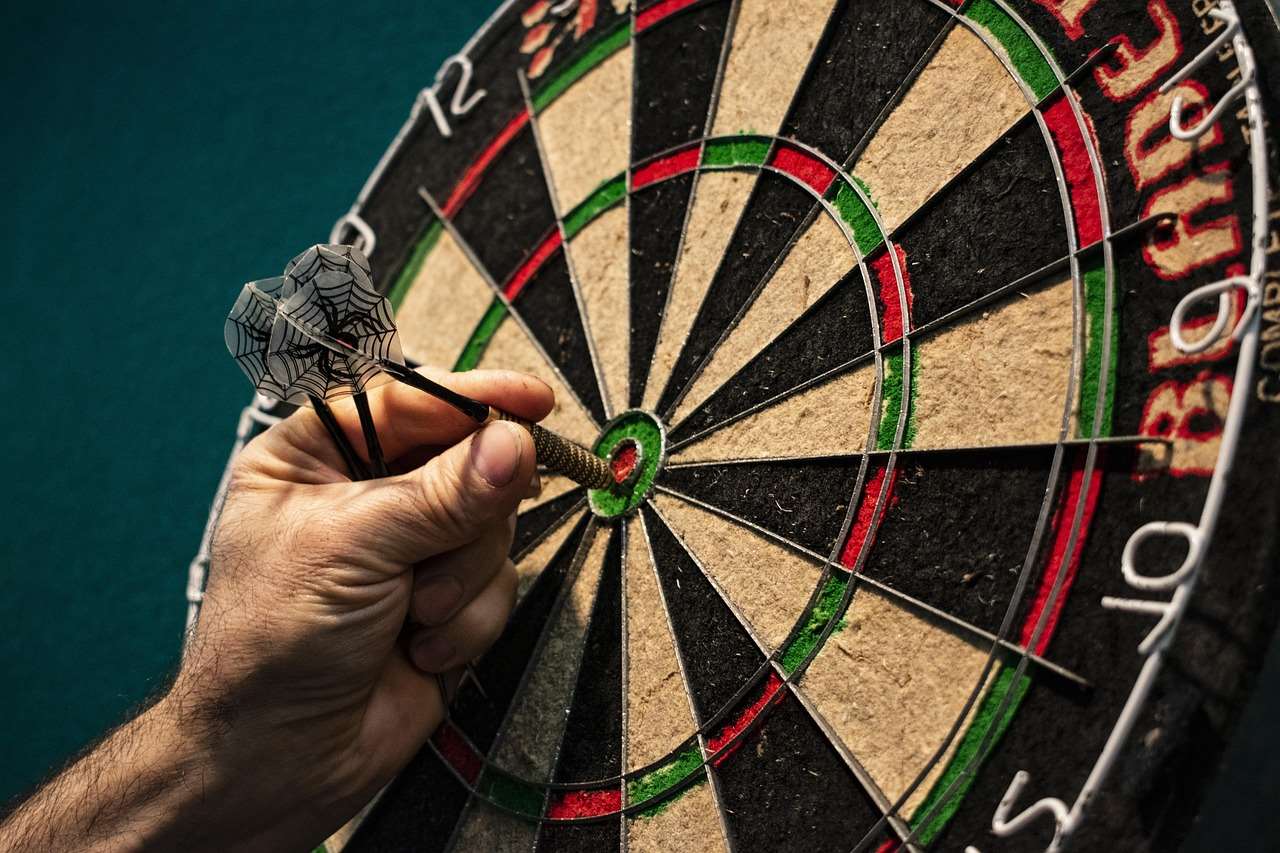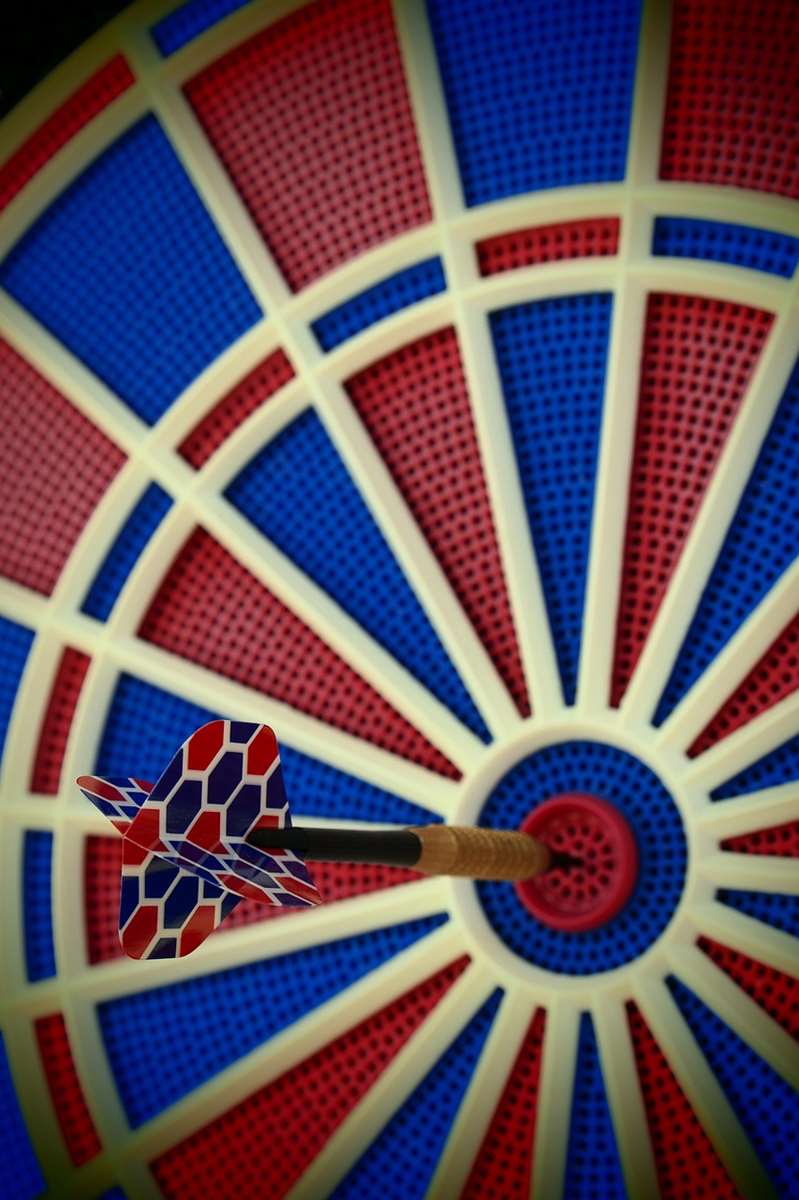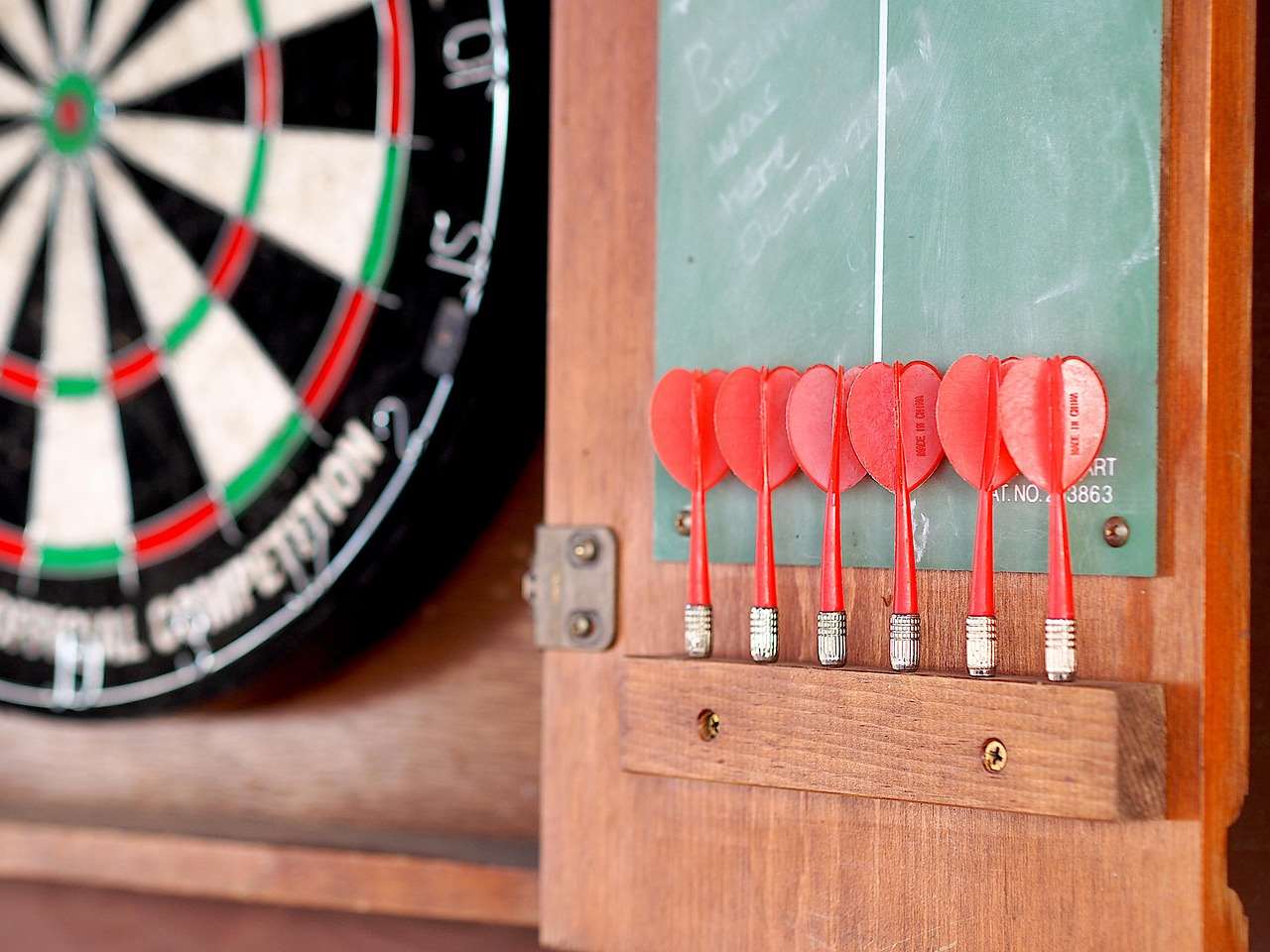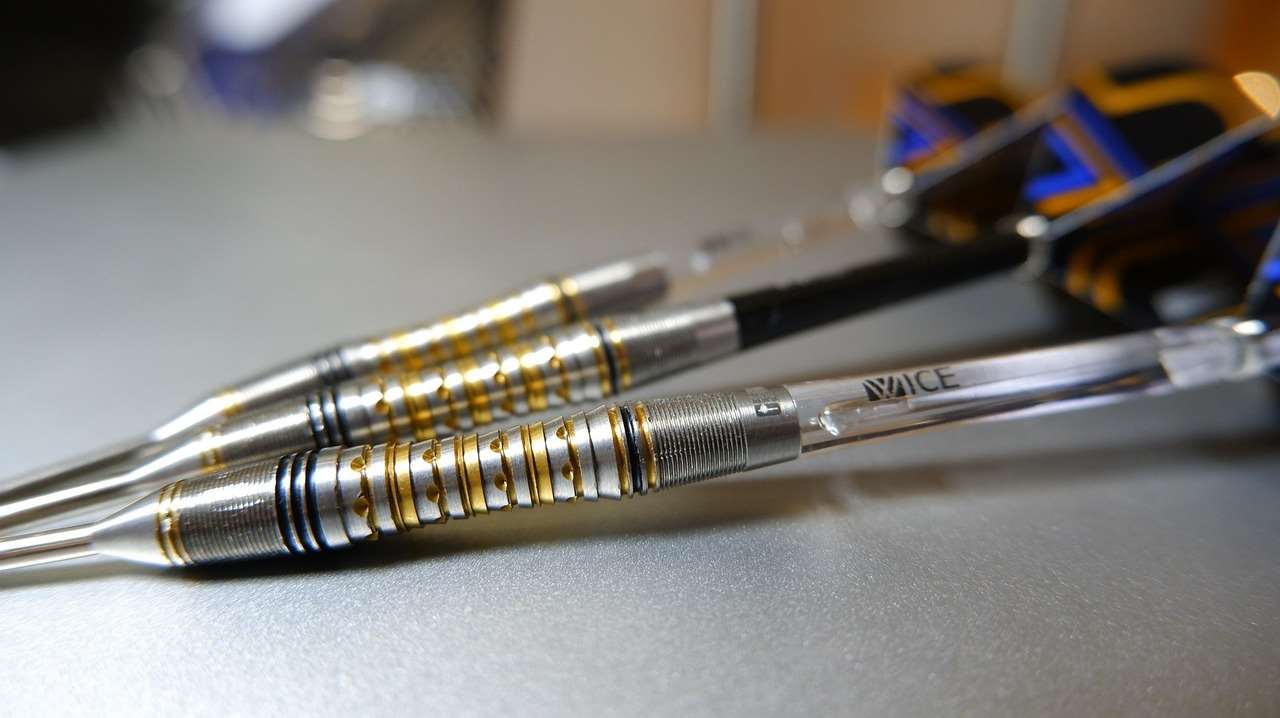Mastering darts etiquette for media and interviews is crucial for maintaining professionalism and representing the sport positively. This article will guide you through the essential dos and don’ts of interacting with the press and conducting yourself in the public eye, ensuring you present a polished and respectful image. We’ll cover everything from pre-interview preparation to post-interview follow-up.
⚠️ Still Using Pen & Paper (or a Chalkboard)?! ⚠️
Step into the future! The Dart Counter App handles all the scoring, suggests checkouts, and tracks your stats automatically. It's easier than you think!
Try the Smart Dart Counter App FREE!Ready for an upgrade? Click above!
Understanding the Importance of Darts Etiquette for Media and Interviews
In the world of professional darts, your performance on the oche is only part of the picture. Your behavior and interactions off the oche, especially during media appearances and interviews, play a significant role in shaping your public image and influencing the perception of the sport as a whole. Excellent darts etiquette for media and interviews isn’t just about being polite; it’s about representing yourself, your sponsors, and the sport in the best possible light. It impacts your brand, sponsorship opportunities, and the overall appeal of darts to a wider audience. Remember, every interview is an opportunity to showcase your personality, promote the sport, and build lasting relationships with fans and media representatives.
Poor conduct, on the other hand, can have detrimental consequences. Negative headlines can damage your reputation, jeopardize sponsorships, and even discourage potential players from taking up the sport. Therefore, understanding and adhering to proper interview techniques and media interaction protocols are paramount for any dart player aspiring to professional success.

Preparing for Media Interviews
Preparation is key to acing any media interview. Rushing in unprepared can lead to awkward moments, misstatements, and a generally unfavorable impression. Here’s a breakdown of what you need to do:
Research the Interviewer and Outlet
Before any interview, take the time to research the interviewer and the media outlet. Understanding their style, target audience, and recent coverage will help you tailor your responses accordingly. Are they known for hard-hitting questions, or do they prefer a more lighthearted approach? What is the primary focus of the outlet – sports, entertainment, or a combination of both? Knowing this information allows you to anticipate potential questions and formulate responses that resonate with the interviewer and their audience.
Anticipate Potential Questions
Brainstorm a list of potential questions that you might be asked. This should include common topics such as your career highlights, upcoming tournaments, your training regime, and your thoughts on the state of the sport. Also, consider more challenging questions about controversial issues, recent performances (both good and bad), and any rivalries you might have. Preparing answers in advance, even in outline form, will help you remain calm and composed under pressure.
Craft Key Messages
Identify 2-3 key messages that you want to communicate during the interview. These messages should be concise, memorable, and relevant to the overall narrative you want to convey. For example, you might want to emphasize your dedication to the sport, your commitment to fair play, or your gratitude to your sponsors and fans. Weaving these key messages into your responses throughout the interview will help you control the narrative and ensure that your message is heard.
Practice Your Delivery
Practice makes perfect! Rehearse your answers aloud, either in front of a mirror or with a friend or coach. Pay attention to your body language, tone of voice, and overall presentation. Try to speak clearly and confidently, and avoid using jargon or slang that might not be understood by a wider audience. Consider recording yourself to identify areas for improvement. Remember, your delivery is just as important as the content of your message.
Darts Etiquette During the Interview
The interview itself is where your preparation truly pays off. Here’s how to maintain professional darts etiquette and shine under the spotlight:
Dress Appropriately
Your appearance matters. Choose attire that is professional, comfortable, and appropriate for the occasion. Unless otherwise specified, err on the side of slightly more formal than casual. Avoid clothing that is too revealing, distracting, or covered in excessive branding (unless it’s a sponsored appearance, of course). A well-groomed appearance demonstrates respect for the interviewer and the audience.
Arrive on Time
Punctuality is paramount. Aim to arrive at the interview location at least 15 minutes early to allow time for settling in and any last-minute preparations. Being late sends a message of disrespect and disorganization, which is never a good start.
Be Polite and Respectful
Treat the interviewer and any other staff members with courtesy and respect. Use polite language, make eye contact, and listen attentively to their questions. Even if you disagree with a question or a comment, respond in a calm and respectful manner. Remember, you are representing yourself and the sport, so maintain a professional demeanor at all times.
Answer Questions Honestly and Thoughtfully
Honesty is always the best policy. Answer questions truthfully and to the best of your ability. If you don’t know the answer to a question, it’s perfectly acceptable to say so. Avoid making up information or speculating on matters you’re unsure about. Take a moment to think before answering, especially for complex or sensitive questions. A well-considered response is always better than a rushed or ill-informed one.
Avoid Jargon and Slang
While technical terms and slang might be common within the darts community, they may not be understood by a wider audience. Use clear and concise language that is accessible to everyone. If you must use a technical term, be sure to explain it in layman’s terms. The goal is to communicate effectively, not to confuse or alienate your audience. Basic Darts Fundamentals for Beginners, such as dart terminology, should be explained to the audience.
Stay Positive and Enthusiastic
Maintain a positive and enthusiastic attitude throughout the interview. Your passion for the sport should be evident in your voice and body language. Avoid negativity, complaining, or criticizing others. Focus on the positive aspects of the game and your own experiences. A positive attitude is contagious and will make you a more engaging and memorable interviewee.
Be Mindful of Body Language
Your body language speaks volumes. Maintain good posture, make eye contact, and avoid fidgeting or distracting gestures. Smile genuinely and nod to show that you are listening. Avoid crossing your arms, which can be interpreted as defensive or closed-off. Project confidence and enthusiasm through your body language to enhance your overall presentation.

Handling Difficult Questions with Finesse
Every media interaction presents potential curveballs. Learning how to gracefully navigate difficult questions is an essential part of darts etiquette for media and interviews:
Stay Calm and Composed
The most important thing when faced with a difficult question is to remain calm and composed. Don’t get defensive or emotional. Take a deep breath and allow yourself a moment to collect your thoughts before responding. Reacting impulsively can lead to misstatements or regrettable comments.
Acknowledge the Question
Start by acknowledging the question and showing that you understand the interviewer’s concern. This demonstrates that you are listening and taking their question seriously. For example, you might say, “That’s a fair question,” or “I understand why you’re asking that.”
Provide a Balanced Response
Offer a balanced and nuanced response that addresses the issue without getting drawn into negativity or controversy. Acknowledge different perspectives and avoid taking extreme positions. Focus on providing factual information and avoiding speculation or personal attacks.
Pivot to a Positive Message
Whenever possible, try to pivot the conversation back to a positive message or a topic you are more comfortable discussing. This allows you to steer the interview in a more favorable direction and control the narrative. For example, you might say, “While that is a concern, I’m more focused on…”
Don’t Be Afraid to Say “No Comment”
In some cases, it may be necessary to decline to answer a question. This is perfectly acceptable, especially if the question is inappropriate, speculative, or involves confidential information. However, avoid simply saying “No comment” without explanation. Instead, provide a brief and polite reason for your refusal to answer. For example, you might say, “I’m not comfortable discussing that topic at this time,” or “That’s a matter that’s currently under investigation, so I can’t comment on it.”
Avoid Getting Drawn into Arguments
Never get drawn into arguments or debates with the interviewer. This will only make you look defensive and unprofessional. If you disagree with a point, express your opinion respectfully and then move on. The goal is to maintain a civil and productive conversation, not to win an argument.
Post-Interview Etiquette: Maintaining Relationships
Your darts etiquette for media and interviews doesn’t end when the camera stops rolling. Following up after the interview is crucial for solidifying relationships:
Send a Thank-You Note
Send a thank-you note to the interviewer and any other staff members who assisted you. This can be a handwritten note or an email. Express your gratitude for their time and effort, and reiterate your key messages. A simple thank-you goes a long way in building goodwill and fostering positive relationships.
Share the Interview
Share the interview on your social media channels and website. This helps to promote the interview and reach a wider audience. Be sure to tag the interviewer and the media outlet in your posts. This also demonstrates your appreciation for their coverage.
Follow Up on Any Promises
If you made any promises during the interview, such as providing additional information or connecting the interviewer with someone else, be sure to follow up on those promises promptly. This shows that you are reliable and committed to your word.

Maintain Contact
Stay in touch with the interviewer and other media contacts. Send them occasional updates on your career and any newsworthy events. Offer to be a resource for future stories. Building and maintaining relationships with the media is a long-term investment that can pay dividends in the future. Consider alternative darts rules for home play as a potential topic for future interviews.
Social Media Etiquette for Dart Players
In today’s digital age, social media is an integral part of a dart player’s public image. Understanding and adhering to proper social media etiquette is essential for maintaining a positive online presence and engaging with fans.
Be Authentic
Authenticity is key on social media. Be yourself and share your genuine thoughts and experiences. Fans appreciate honesty and transparency. Avoid trying to be someone you’re not or posting content that feels forced or contrived.
Engage with Fans
Social media is a two-way street. Engage with your fans by responding to comments, answering questions, and participating in discussions. Show them that you appreciate their support and that you value their opinions. This helps to build a loyal following and foster a strong sense of community.
Be Respectful
Treat everyone with respect on social media, even those who disagree with you. Avoid using offensive language, making personal attacks, or engaging in online arguments. Remember, everything you post online is public and can be used against you.
Be Mindful of What You Share
Think carefully before you share anything on social media. Avoid posting content that is controversial, offensive, or could be interpreted as unprofessional. Be especially careful about sharing personal information or details about your private life. It is important to practice careful how to make darts fairer with handicap rules when competing in online games.
Use Disclaimers When Necessary
If you are posting content that is sponsored or promotional, be sure to use disclaimers to indicate that it is an advertisement. This helps to maintain transparency and avoid misleading your followers.

The Role of Your Management Team
If you have a management team, they play a crucial role in managing your media appearances and ensuring that you adhere to proper darts etiquette for media and interviews.
Media Training
Your management team should provide you with media training to help you prepare for interviews and other media appearances. This training should cover topics such as how to answer difficult questions, how to handle sensitive topics, and how to project a positive image.
Scheduling and Coordination
Your management team should handle the scheduling and coordination of your media appearances. This includes confirming the date, time, and location of the interview, providing the interviewer with background information, and ensuring that you are properly briefed before the interview.
Reviewing Media Requests
Your management team should review all media requests to ensure that they are appropriate and aligned with your brand and values. They should also negotiate the terms of the interview, such as the topics that will be covered and the length of the interview.
Providing Support
Your management team should provide you with support during and after media appearances. This includes providing feedback on your performance, addressing any concerns that you may have, and helping you to manage your online presence.

Conclusion: Elevating the Sport Through Professionalism
Mastering darts etiquette for media and interviews is an ongoing process that requires dedication, preparation, and a commitment to representing yourself and the sport in the best possible light. By following the tips and guidelines outlined in this article, you can enhance your public image, build lasting relationships with the media, and contribute to the growth and popularity of darts. Remember, every interaction is an opportunity to showcase your professionalism and passion for the game. Embrace these opportunities, and you’ll not only elevate your own career but also contribute to the positive perception of darts worldwide.
Ready to take your darts etiquette for media and interviews to the next level? Invest in media training, practice your interviewing skills, and always strive to present a polished and professional image. The future of darts depends on it!
Hi, I’m Dieter, and I created Dartcounter (Dartcounterapp.com). My motivation wasn’t being a darts expert – quite the opposite! When I first started playing, I loved the game but found keeping accurate scores and tracking stats difficult and distracting.
I figured I couldn’t be the only one struggling with this. So, I decided to build a solution: an easy-to-use application that everyone, no matter their experience level, could use to manage scoring effortlessly.
My goal for Dartcounter was simple: let the app handle the numbers – the scoring, the averages, the stats, even checkout suggestions – so players could focus purely on their throw and enjoying the game. It began as a way to solve my own beginner’s problem, and I’m thrilled it has grown into a helpful tool for the wider darts community.